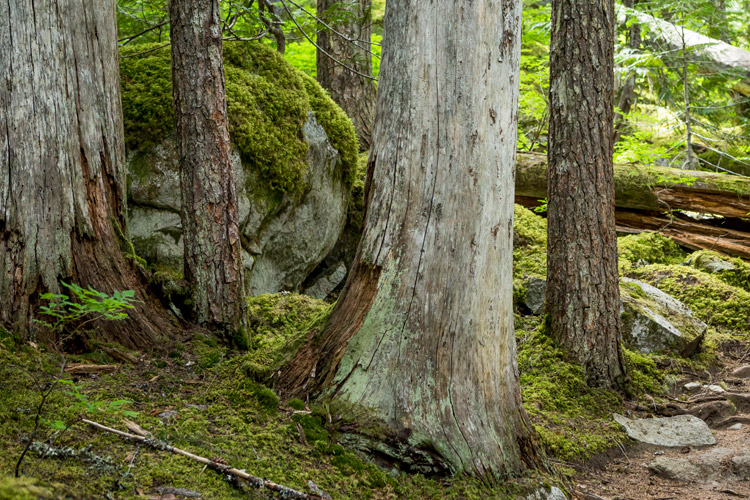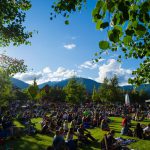“For us, the forest is like a church – it is where we can stay connected to the natural world – a place of balance, harmony and spirituality.” – Squamish Lil’wat Cultural Centre website.
The towering rainforests of Coastal British Columbia, particularly the Western Red Cedar, have long been an integral part of human life in these mountains.
“The Cedar is important,” says Alison Pascal, a young weaver and ambassador from the Lil’wat Nation. “We consider it the mother tree or ‘tree of life’ because we use the entire thing—the roots, the bark, the branches, the wood. The cedar is one of our most valuable resources.”
Western red cedar carvings, masks, canoes, totems, and longhomes are known worldwide but local natives have also been weaving with cedar roots and bark for centuries. “We used it for everything,” Alison says. “We made it into mats for sleeping and hangings to give people privacy. We made it into beautiful hats or baskets. Also it could be used for rope—Cedar bark was our regular all-purpose rope.”
Weaving with the traditional style of her ancestors, Alison has learned how to harvest bark from a cedar by pulling long strips off one side of the tree. It’s an ancient technique that produces the necessary bark but doesn’t kill the tree. Cedars harvested in this manner continue to grow and the stripped area becomes a scar-like bare patch that remains for the life of the tree. Centuries later, First Nations are able to point to these “Culturally Modified Trees” (CMTs) as evidence that they inhabited and used the lands in the past.

By BC law, any site containing physical evidence of human use or habitation prior to 1846 potentially falls under the Heritage Conservation Act and may not be altered without a permit. This means Culturally Modified Trees are suddenly a huge player in land-use conflicts and forest conservation efforts. (Ironic again because the true value of old growth trees is intrinsic—they support life on this planet—yet only when we prescribe archeological or historical value do the trees start getting attention and respect from government and industry.)
While many kinds of Culturally Modified Trees exist, there are a few bark-stripped CMT’s you can check out locally although Alison admits unless you know what you’re looking for it’s easy to walk right by. “There is one out near Lost Lake,” she says, adding that they have also located CMTs in the Fitzsimmons creek basin and out in the Soo valley, north of town. “I don’t know if the average person would notice,” Alison says, “but if you were taking a long, slow walk you would definitely have an opportunity to see one.” There is also a small CMT in the Forest Walk up behind the Squamish Lil’wat Cultural Centre (SLCC).
Alison admits Lil’wat weavers do often get bark from local logging companies who have no real use for it but says, “We still get it from living trees too because the gathering is an important process. You can choose a good tree that has grown straight without too many branches and also so that you feel a connection to the materials you’re working with. Traditionally our culture was built to live in harmony with the land and the animals. That is how we survived, by taking just enough.”


